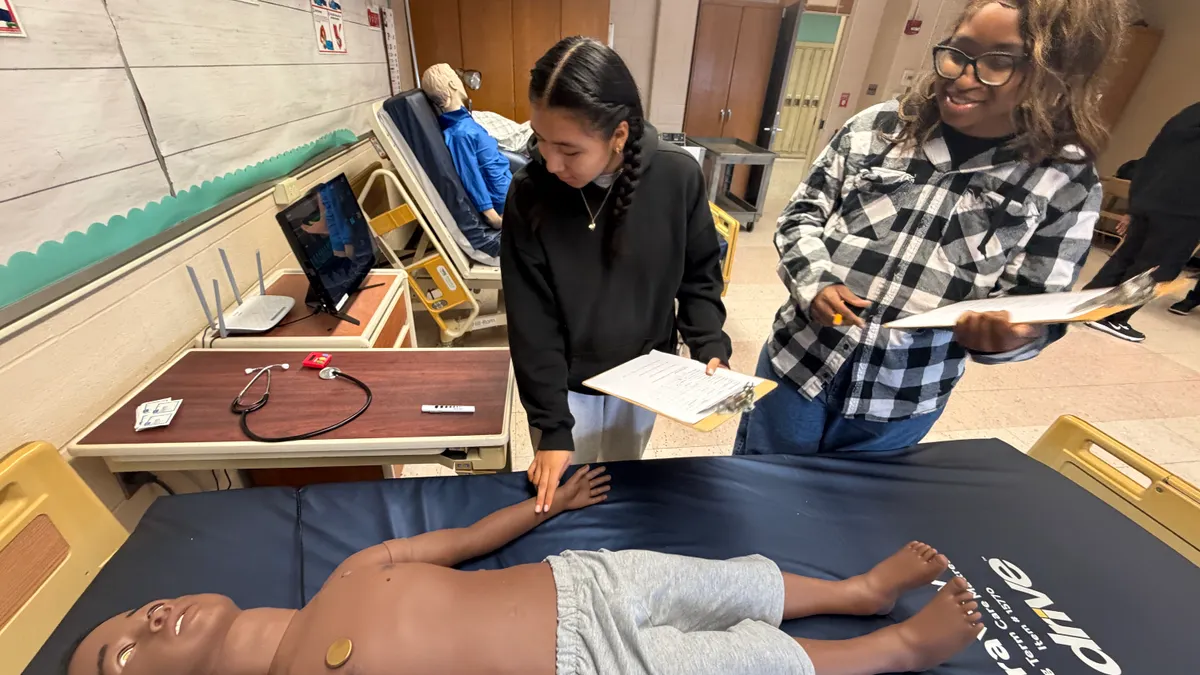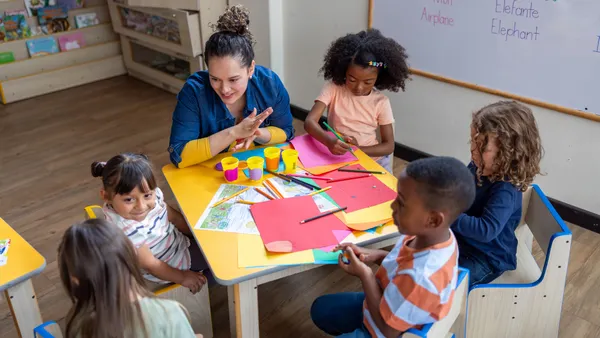Social-emotional learning (SEL) can help all students achieve — not just those who have experienced trauma or have behavior issues. SEL also creates a school culture that is “inclusive of and responsive to” diversity. Those are among the statements made Monday by a panel of educators as part of the Aspen Institute’s National Commission on Social, Emotional and Academic Development.
The members of the panel — including superintendents, teacher leaders and administrators — say that integrating SEL into academics helps teachers better manage their classrooms, but that high-quality professional development is necessary in order for teachers to develop this level of skill in teaching.
“It’s about us ensuring that schools fit our kids rather than demanding that our kids fit the mold of school,” Sydney Chaffee, a 9th grade humanities teacher at Codman Academy Public Charter School in Boston and the 2017 National Teacher of the Year, said Monday at an event in Washington.
At a time when the nation is looking for solutions to violent tragedies like the Feb. 14 shooting at Marjory Stoneman Douglas High School in Parkland, FL — and debating whether it’s better to arm teachers or hire more mental health professionals — the panel’s statements take on greater significance.
“Essential to creating and sustaining a positive school culture is the degree to which students feel known, cared about, appreciated and included, and have a meaningful voice in the community of the classroom and the school,” write the authors of "The Practice Base for How We Learn: Supporting Students’ Social, Emotional, and Academic Development."
The report is a companion document to one released last fall by the commission’s scientific panel, which asserted that learning is a social, emotional and cognitive process, and that when educators “deliberately and thoughtfully” connect these domains in the classroom, students benefit.
"It’s not about one particular lesson, one particular framework; it’s about the culture that shepherds you as a student or as a teacher toward caring and focusing on these issues," said Ron Berger, the chief academic officer for EL Education, a network of over 150 schools in 30 states. "We need to build school communities so when new kids enter, they feel, 'In my old school I could be a jerk; in this school that’s not OK.'"
Avoiding burnout
The report says that as educators develop their own social-emotional competencies, they not only serve as role models for students, but might also be protecting themselves from burnout, whether they are relatively new teachers or at a later stage in their career.
The speakers on Monday's opening panel also talked about the need to include teachers' voices in the planning and implementation of SEL efforts. Jillian Ahrens, who teaches at Memorial School in Cleveland and is vice president of the Cleveland Teachers Union, said an emphasis on SEL is even built into the union's collective bargaining agreement with the district.
"It is critical that we look at how we support teachers. Teaching can be a lonely field," Ahrens said. "Adults may need to practice some of these skills."
She added that, in the classroom, simply having students work in groups doesn't mean that they are developing social-emotional skills, but that it's important in the midst of lessons to talk about issues such as respect and responsibility.
The authors also highlight the importance of consistency in SEL programs and messages to students at the school level, as well as the importance of district and state leadership to support schools through funding initiatives and standards. In addition, district-level positions dedicated to SEL — which have been increasing nationwide — can also help ensure that SEL is always considered as part of other initiatives and school operations. Sheldon Berman, the superintendent of Andover (MA) Public Schools and the moderator of the panel, said that these leaders can focus on monitoring a district's progress toward SEL goals.
In response to a question about teacher preparation, Julia Sarmiento, the SEL coordinator for the Hillsborough County (FL) Public Schools, said it's also important to include SEL in new teacher orientation programs.
Not 'one or the other'
The educators say there is a place for both explicit instruction in SEL competencies — and giving students opportunities to practice them — as well as weaving it into the curriculum.
“Every academic subject area provides opportunities for students to think through social and emotional issues,” the report says. “Literature and social studies offer occasions to discuss how fictional or historical characters handled social or emotional situations, and what might have happened if they had dealt with these situations differently."
At the event, Berger stressed that because students spend so much time in school, it's better for educators to address SEL "intentionally" and not "haphazardly and poorly." He added that schools with an intentional focus are also helping students achieve and get into college.
"It’s not as if you have to choose one or the other," he said. "They’re synergistic is the way that when you focus on character and social-emotional skills, kids get the skills to be able to compete academically as well."
Partnerships with families as well as community-based organizations also reinforce SEL outside of the classroom and give students opportunities to apply emotions such as compassion.
"Even in the news now, we see where some students are taking action," Sarmiento said. "They are taking what they have been learning and they are having a voice."
In January, the commission released a report on its progress as well as information on what is coming during the remainder of its work. Early next month, the commission is expected to release a report that adds parents’ and students’ voices to the conversation.
The practices and learning environments described in Monday’s report are “achievable,” the authors write. “The time has come to accelerate the work of bringing the integration of social, emotional, and academic development to every district, every school, every classroom, and every student,” the report says. “This work deserves a place at the forefront of our nation’s education agenda.”





 Dive Awards
Dive Awards












